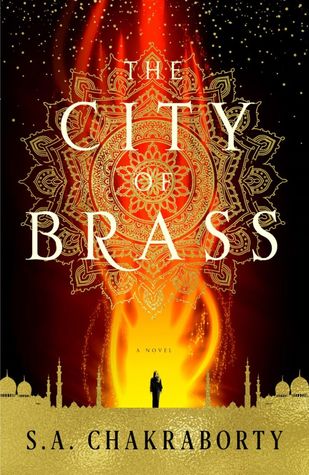
The Beautiful Ones by Silvia Moreno-Garcia
2017, Innsmouth Free Press/Thomas Dunne Books
I have to preface this review by worrying that I’m not the right person to write it! I rarely read romances, and my knowledge of the Belle Époque period that The Beautiful Ones draws on for its setting and, I think, its style, is fairly limited – although I have read a passable cross section of other 18th and 19th century fiction including a fair number of gothic novels. Despite not feeling up to the task, I find a lot to recommend and to talk about in The Beautiful Ones, so I’m going to dial up my courage and engage with this book on its own merits.
The Beautiful Ones follows Nina Beaulieu, a woman who has travelled from her countryside home to the big city for her first ever Grand Season. Nina is, as befits this trope, somewhat overwhelmed by city life and bemused by the things the people surrounding her find important, and has unfortunately been left in the primary care of her married cousin, Valérie, who is equal parts vindictive and impatient towards her relative – having been left embittered by her own experiences of romance and marriage a decade earlier. To make matters worse, Nina has telekinetic powers, a rare gift in her world and a practice considered decidedly unsuitable for well-bred young women.
Enter Hector Auvray, a dashing performer renowned for his own telekinesis, who gets talking to Nina at a ball and soon falls into her orbit. Nina is initially keen to spend time with Hector in order to get him to teach her to control her powers – which, untrained, flare up when she gets emotional – but when he apparently begins to court her, her feelings quickly change into something more. We learn early on, however, that Hector is the very man who had his heart broken by Valerie a decade earlier, and that his scheme to get close to Nina may be no more than a ploy to get close to his old flame…
Given the conventions of romance novels, particularly the need for a “happily ever after”, I spent almost the first half of the book being deeply sceptical of the narrative, and particularly of Hector, a much older and more experienced man who is shamelessly using the affections of a young, inexperienced woman for completely pointless ends. I was therefore pleasantly surprised by how the second act was handled, with both Nina and Hector offered opportunities to grow and to re-establish a relationship in a way which felt much more “right”, despite the external obstacles placed in their way. Nina’s telekinesis, and her process of learning to use it, is utilised to great effect, particularly in the second act. This is the second of Moreno-Garcia’s books I’ve read with a magic system greatly affects the characters without impacting the setting (although Signal to Noise is urban fantasy, whereas the Beautiful Ones is set in secondary world – just an overwhelmingly mundane one) and once again I think its handled very well, with the disapproval of society towards Nina providing a perfect encapsulation of how disinterested these “Beautiful Ones” are in her true self, and how narrow and unsatisfying that definition of “beauty” is.
The Beautiful Ones keeps its main cast small: apart from Nina, Valérie and Hector, we also have Valerie’s husband Gaetan – who is nowhere near as boring and awful as Valérie makes out – and the siblings Luc and Étienne Lémy, who serve as complicating factor and friend of Hector respectively. I did feel the lack of a larger supporting cast made things quite claustrophobic at times, which heightened some of the melodrama but also undermined the feeling of being in a grand city full of societal intrigue. In particular, it’s a shame that Nina makes no female friends her own age, even in the second half of the book where she is less reliant on Valérie and the plot does not require her to be directly constrained. I also felt occasionally that the writing style muffled the more lurid plot elements – there’s a magical performance and a duel in this book, after all – and could have played with a less detached style, particularly at those more melodramatic points.
Despite those issues, the Beautiful Ones was gripping and didn’t feel slow to me at all, given the amount of both internal and external nonsense the characters have to wade through in order to get their HEA. I still don’t think romance is going to form more than an occasional (and usually accidental) part of my reading diet, but I was overall very impressed by this book, and it’s cemented Silvia Moreno-Garcia on my ever-growing “author to watch” list. While I can’t analyse the Beautiful Ones against many other works of its genre, or the historical period it pastiches, it stands perfectly well on its own merits and I would recommend it as such.
Rating: 7 floating card shuffles out of 10.

